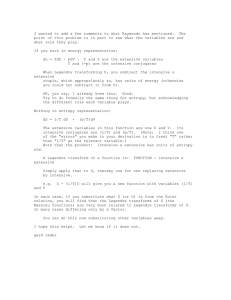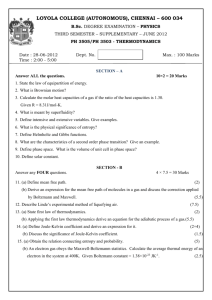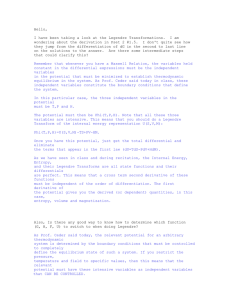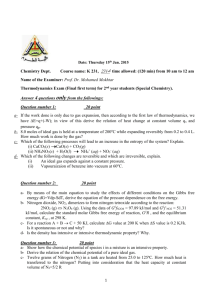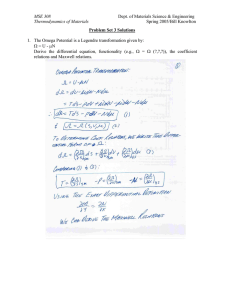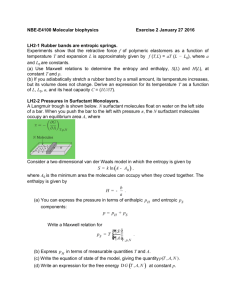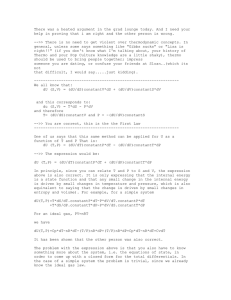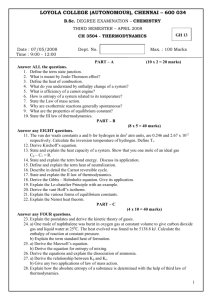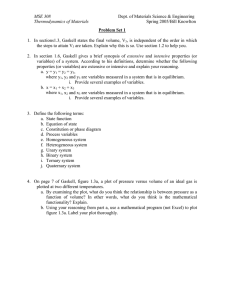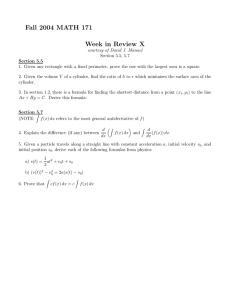MSE 308 Thermodynamics of Materials Dept. of Materials Science & Engineering
advertisement
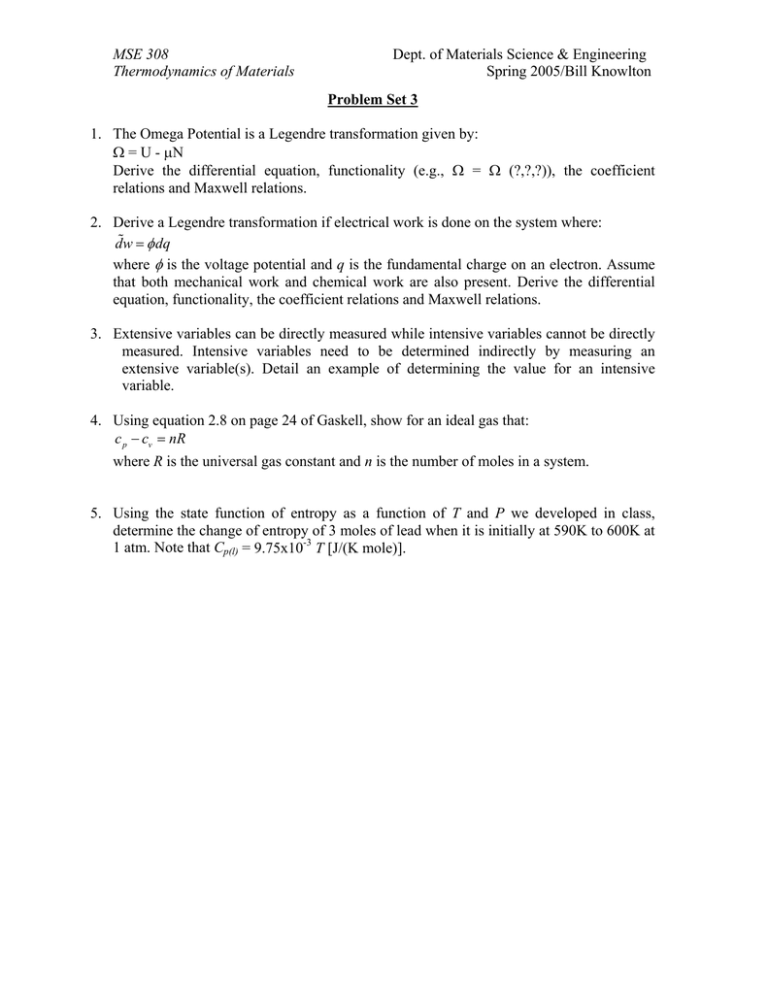
MSE 308 Thermodynamics of Materials Dept. of Materials Science & Engineering Spring 2005/Bill Knowlton Problem Set 3 1. The Omega Potential is a Legendre transformation given by: Ω = U - µN Derive the differential equation, functionality (e.g., Ω = Ω (?,?,?)), the coefficient relations and Maxwell relations. 2. Derive a Legendre transformation if electrical work is done on the system where: = φ dq dw where φ is the voltage potential and q is the fundamental charge on an electron. Assume that both mechanical work and chemical work are also present. Derive the differential equation, functionality, the coefficient relations and Maxwell relations. 3. Extensive variables can be directly measured while intensive variables cannot be directly measured. Intensive variables need to be determined indirectly by measuring an extensive variable(s). Detail an example of determining the value for an intensive variable. 4. Using equation 2.8 on page 24 of Gaskell, show for an ideal gas that: c p − cv = nR where R is the universal gas constant and n is the number of moles in a system. 5. Using the state function of entropy as a function of T and P we developed in class, determine the change of entropy of 3 moles of lead when it is initially at 590K to 600K at 1 atm. Note that Cp(l) = 9.75x10-3 T [J/(K mole)].
